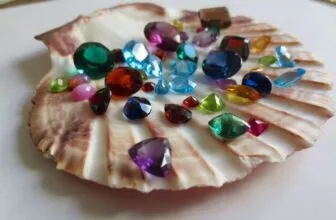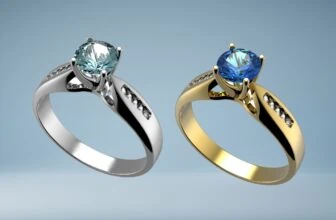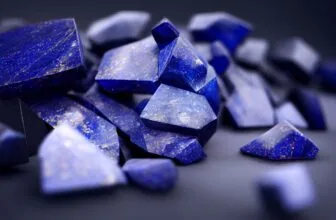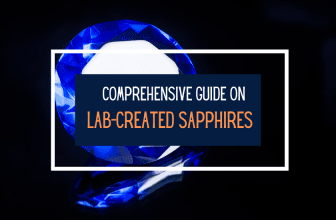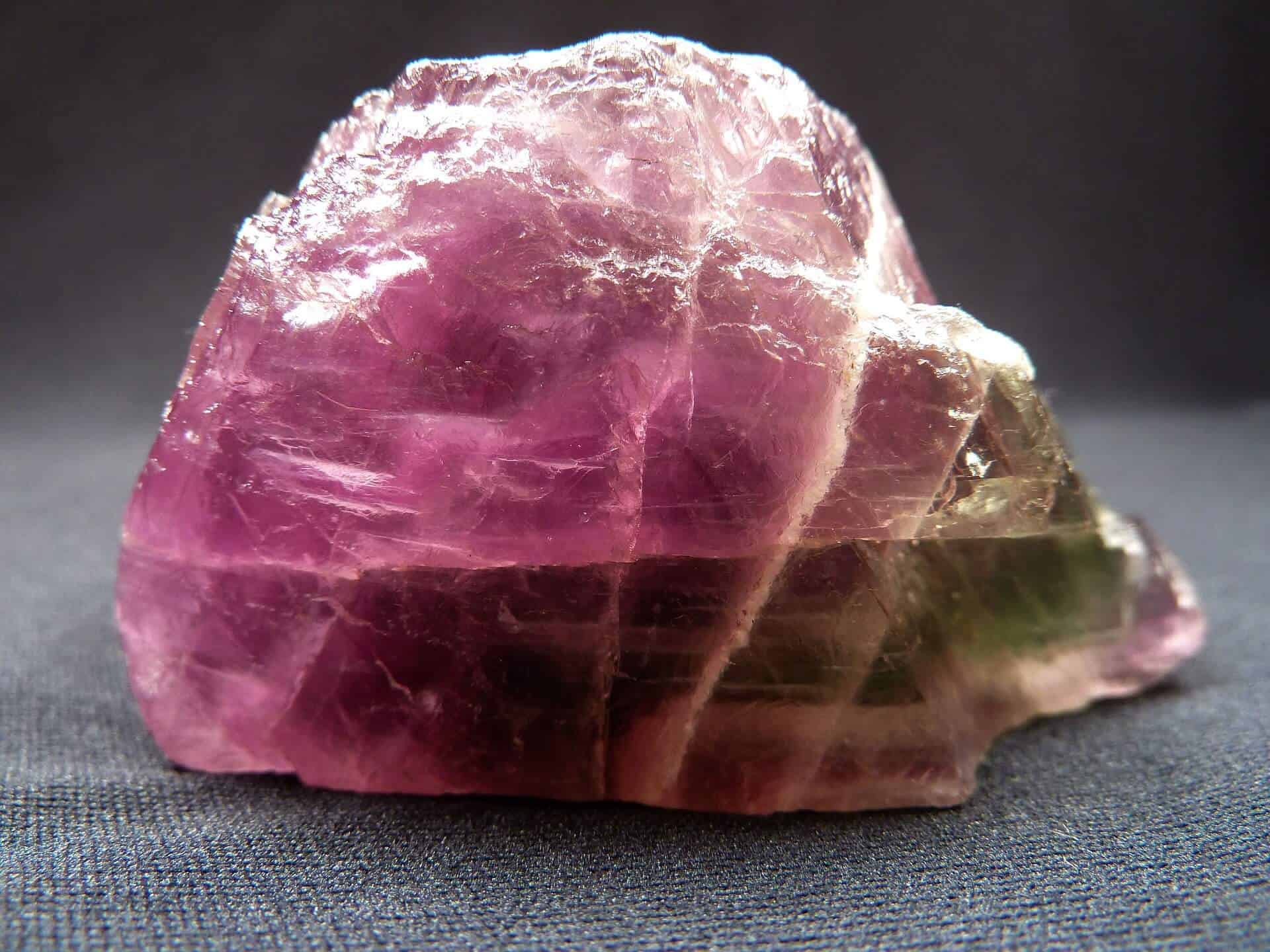
Table of Contents
Pink is a soft, relaxing color that has been used in jewelry for centuries. However, in the last decade, pink surged in popularity, with gemstones such as morganites, tourmalines, and pink sapphires becoming increasingly sought-after.
While it is generally considered a feminine color, many men also wear beautiful pink gemstones as jewelry. Pink is not a gemstone color that is bound to fade away too soon. It is right up there with the popular blue, red, and green gemstones.
As there is a baffling range of pink stones, rocks, and minerals out there, we’ve narrowed it down to a handy list of the Top 15 Pink Gemstones used in jewelry. We promise you’ll find at least one that you fall in love with!
Pink Gemstone list
1. Pink Diamond
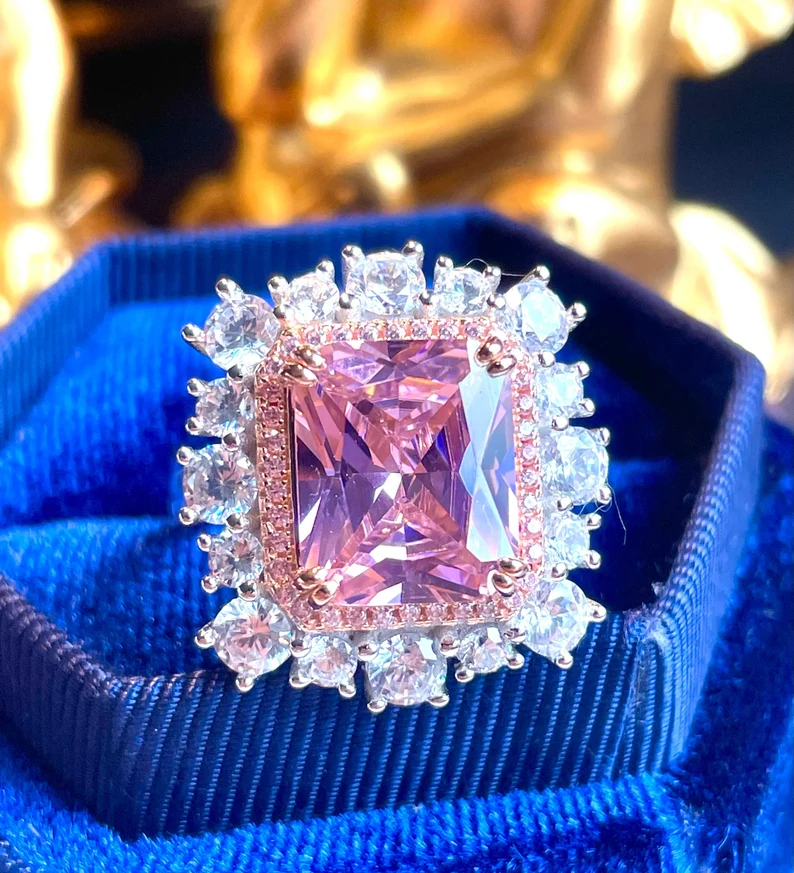
The second rarest variety of colored diamonds, pink diamonds are a prestigious and exclusive stone. Pink diamonds are very rare, with most of the best quality stones coming from the Argyle Mine in Australia. They are extremely expensive, with a carat retailing at roughly around $100,000.
One of the mysteries of pink diamonds is the origin of their color. While other colored diamonds get their hues from the presence of trace elements during their formation, pink diamonds are speculated to receive their color due to high-pressure graining that causes a compressed internal structure, known as plastic deformation.
A very durable and wearable stone, pink diamonds rank 10 on the Mohs scale. They often come with secondary tints, such as brown, purple, gray, and orange.
However, the best pink diamonds are those that have the most intense and vivid shades of pink. Pink diamonds are beyond the budgets of the average consumer, but a more affordable option would be synthetic pink diamonds.
2. Pink Sapphire
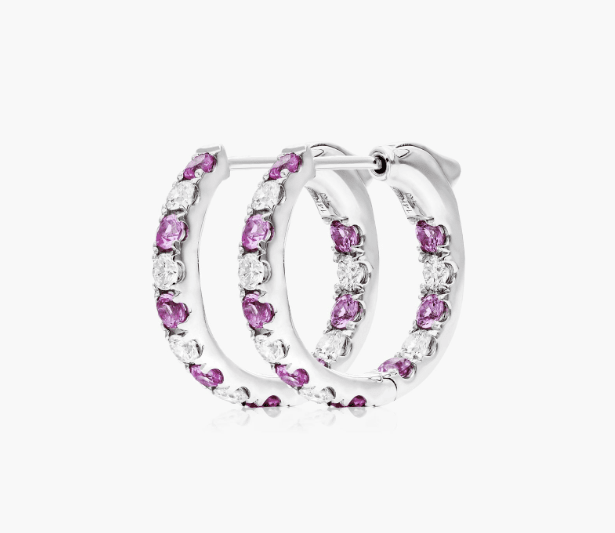
Pink sapphires are one of the most popular sapphire colors. They are very rare in nature and come in bright shades of pink. Hot pink is the most sought-after shade as they exhibit a very vivid, bright color, but muted shades of pink are also getting increasingly popular.
The pink sapphires are made of corundum and receive their color from traces of chromium. They are very durable and tough, with a Mohs rating of 9. This makes them ideal for daily wear with minimal maintenance required to keep the stone lustrous and long-lasting.
Pink sapphires are quite affordable, in comparison to diamonds, and make a very good substitute for pink diamonds. You can also find them in synthetic or enhanced versions, which are even more affordable although less valuable than a natural pink sapphire.
3. Morganite
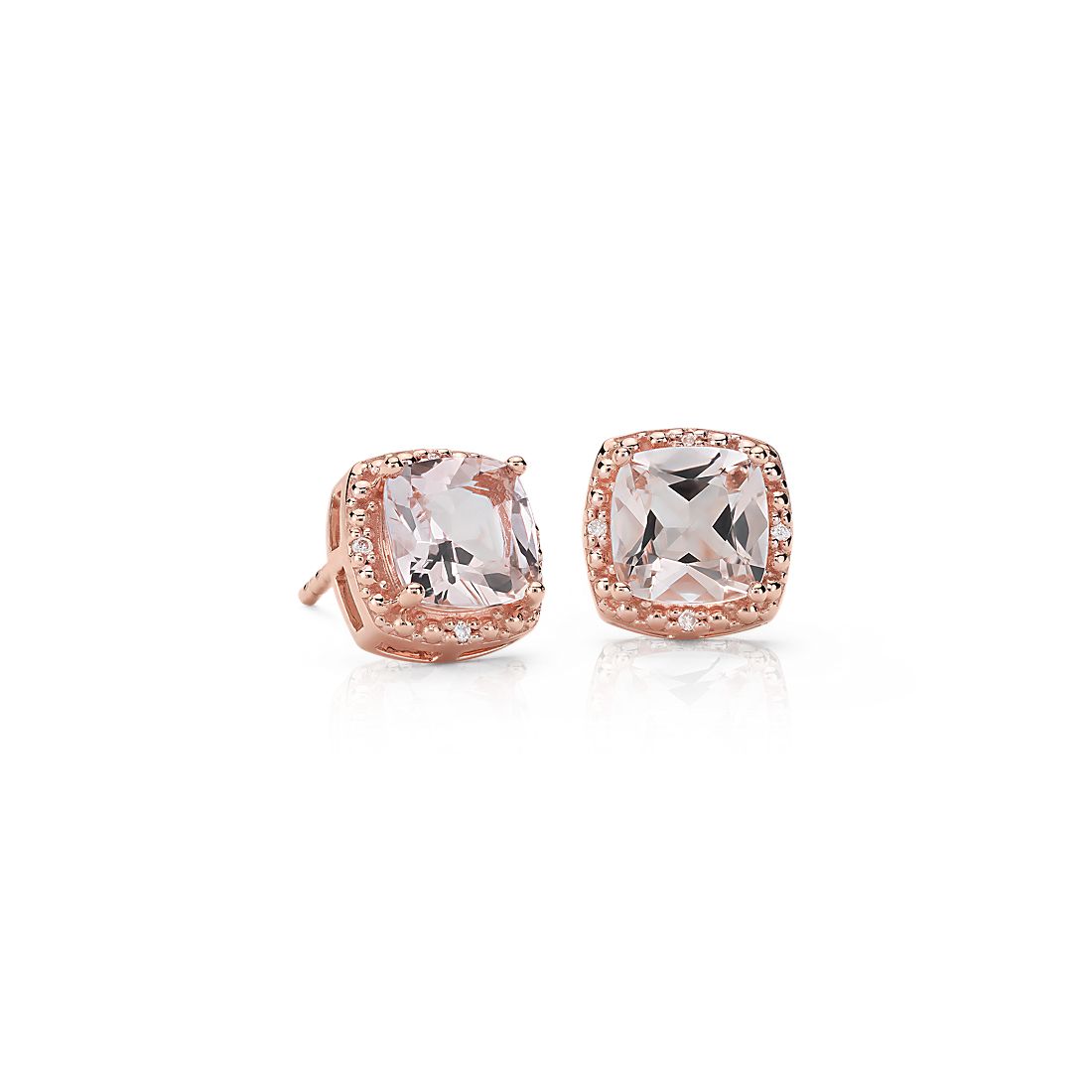
Morganites have become one of the most in-demand gemstones when it comes to jewelry. This is especially true for engagement rings, where the feminine soft hues of this gemstone have captured the hearts of many couples.
Morganite comes from the beryl family, which includes prestigious members such as emeralds and aquamarines. Also known as Rose Beryl or Pink Emerald, morganite gets its distinct hues from traces of manganese and cesium.
Most morganite is pale pink or salmon pink, with rose-tinted varieties being the most sought-after. Ranking at 7.5 to 8 on the Mohs scale, morganite is a fairly durable stone and suits all types of jewelry. With reasonable care and cleaning, this gemstone will remain lustrous and sparkling for a long time.
4. Pink Tourmaline
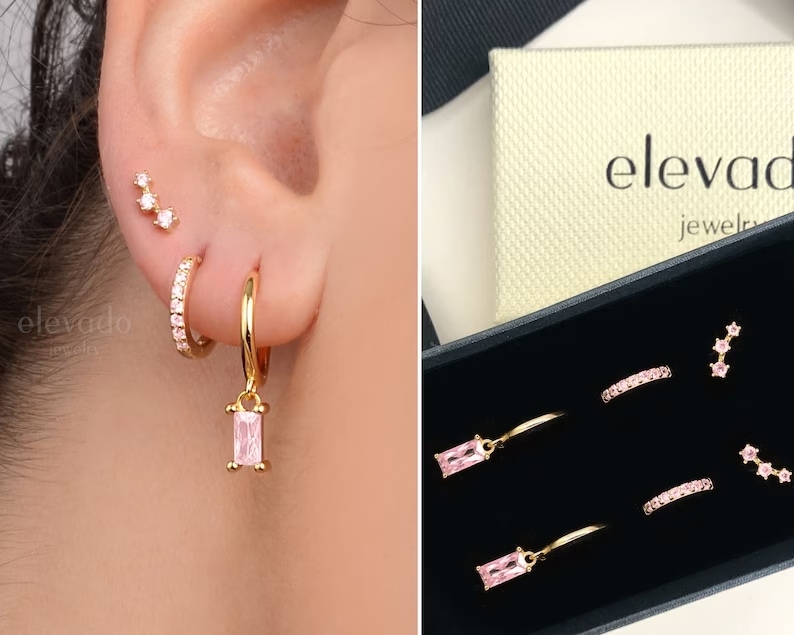
Tourmaline comes in a variety of colors, of which pink tourmaline is one of the most popular. Pink tourmalines are easy to find, come in a range of shades, and are commonly used in jewelry. They are quite affordable, with the price mainly depending on the intensity of the color.
Most pink tourmalines are cut into faceted shapes, to enhance the stone’s brilliance. This gives the stone depth and light reflection. Pink tourmalines are fairly durable stones, with a Mohs rating of 7 to 7.5. They can be made into all sorts of jewelry but will require some care as they can be scratched easily.
Although impurities are common in tourmalines, inclusions in pink tourmalines are often tolerated, especially if the hue of the stone is vivid and saturated. Heat treatment is commonly carried out on tourmalines to enhance their color, however, your vendor should let you know if such treatments have been done on your stone.
5. Pink Topaz
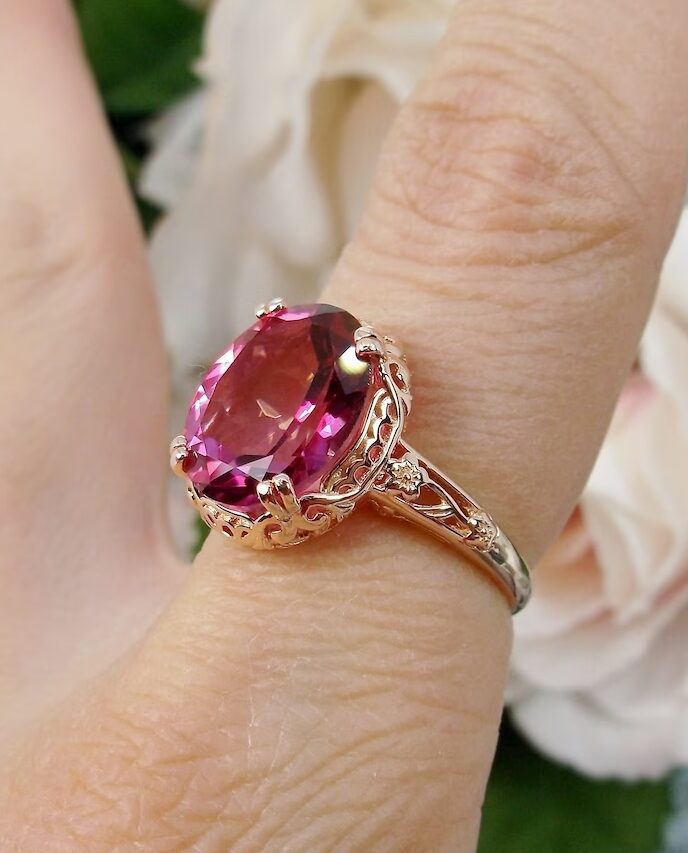
Pink topaz is one of the rarer and most valuable topaz colors and is not commonly found in nature. As a result, most pink topaz on the market has been treated. This is done by heat-treating low-quality brown or pale topazes to turn them into the more desirable topaz colors, such as pink.
The majority of pink topaz comes from Brazil, although they are also found in Sri Lanka, Mexico, Burma, the USA, and Nigeria.
Pink topaz is a hard and durable gemstone, with a Mohs rank of 8, and is good for daily wear. The stone has a high brilliance and beautiful, vitreous luster.
6. Rhodochrosite
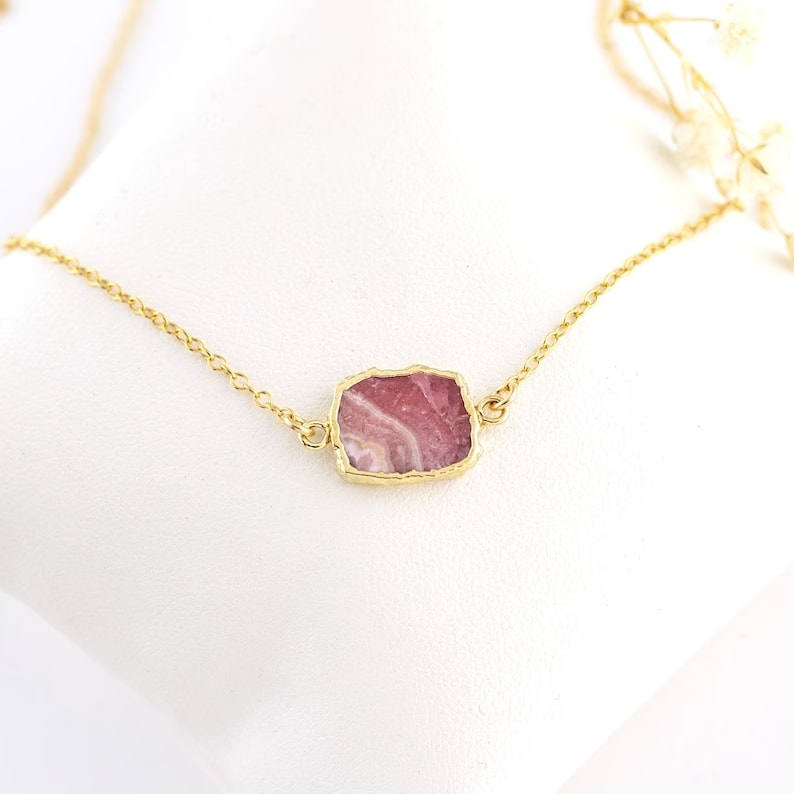
Rhodochrosite is a beautiful gemstone made of manganese carbonate minerals. It comes in a range of striking pink hues, from faint pink to red. Rhodochrosite often contains banded streaks, similar to agate, which makes for interesting patterns on the stone.
Cutting rhodochrosite requires expertise and skill, as the stone contains distinct cleavage, which can make it prone to breakage. Generally, the stone is cut into smooth cabochons as faceted rhodochrosite is too delicate for use in jewelry.
As the stone is very soft (3.5 to 4 Mohs) it is easily scratched and damaged. As a result, although it is very attractive, rhodochrosite is not recommended in use for jewelry that may be subject to rough wear and tear, especially rings and bracelets.
7. Pink Spinel
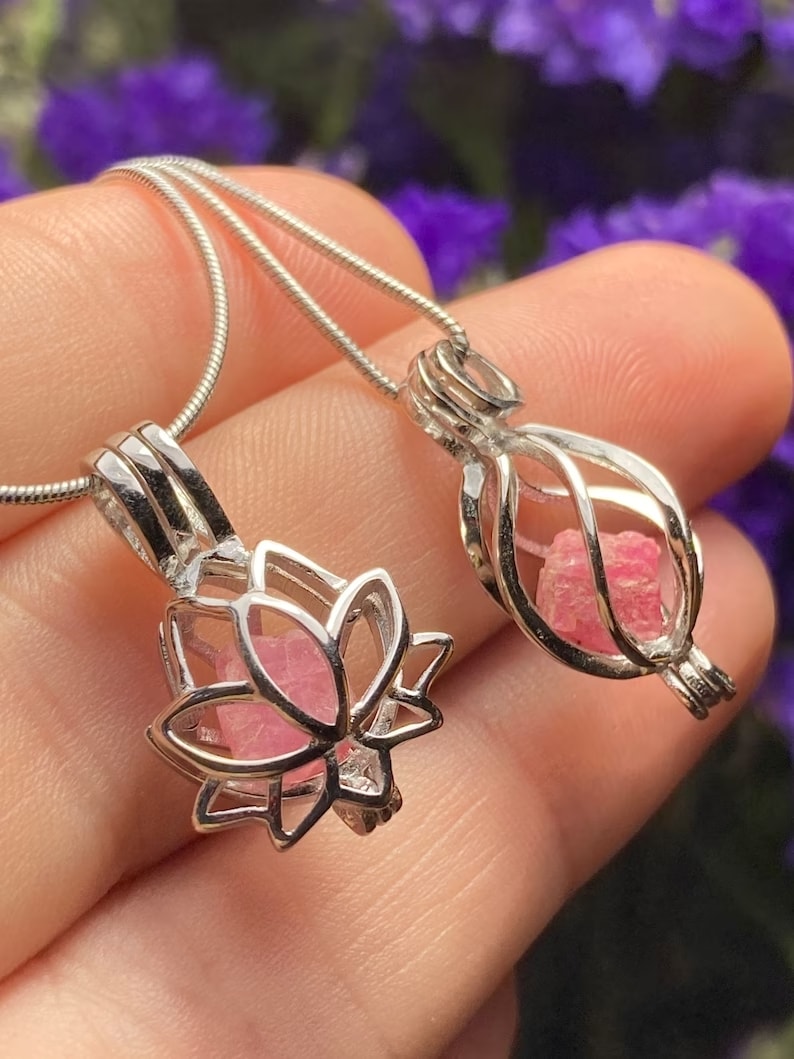
Pink spinel is a little-known gemstone that is extremely rare. For a long time, pink spinel was mistaken for pink sapphires and rubies and was only recently identified as a stone in its own right. Of all the spinel colors, pink remains one of the most valued and popular.
Most pink spinel is free of inclusions, although some may contain needle-like rutile inclusions that can give the stone the highly-sought after gemstone phenomenon known as asterism.
One of the pink spinel’s selling points is its high refractive index and dispersion, which makes the stone brilliant and fiery. When faceted, this is maximized. Pink spinel is a durable stone (Mohs 8) but heat can cause the color of the stone to fade, so keep spinel jewelry away from heat sources.
Pink spinel is quite affordable and does not come with any treatments. There are synthetic versions of pink spinel on the market but these are rare.
8. Kunzite
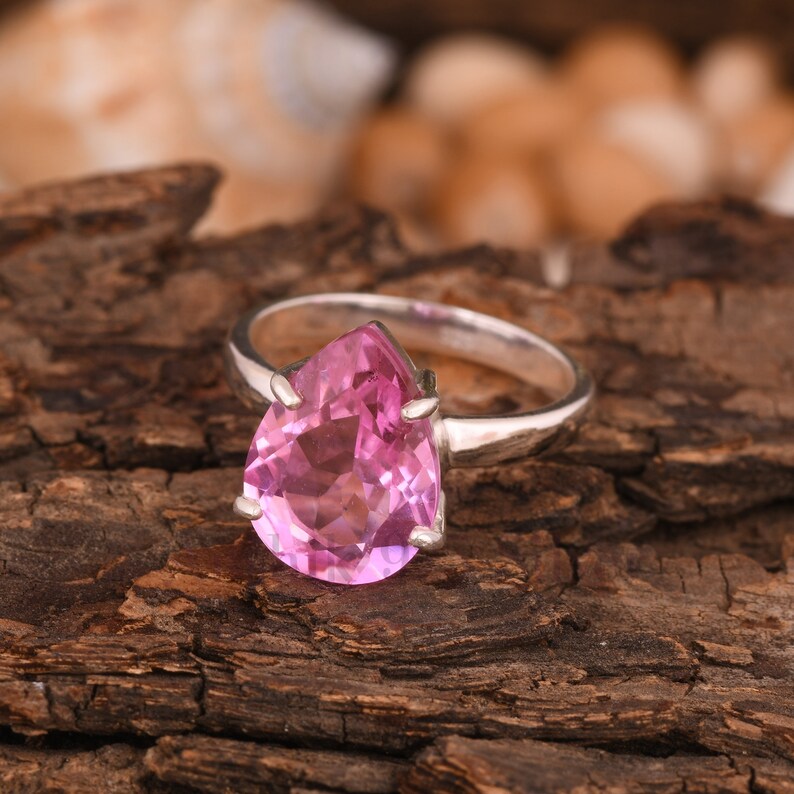
Despite its beauty and wearability, kunzite is a little-known gemstone in the jewelry world. Although it was initially discovered in the USA, today most kunzite comes from Pakistan and Afghanistan. Most kunzite is faint pink, although some stones can have an intense and vivid color.
Most kunzite is transparent but may contain various types of inclusions. While some kunzite stones are polished and smooth when used in jewelry, faceting is quite common to bring out the stone’s brilliance.
Kunzite also exhibits pleochroism, which refers to the stone’s ability to display two distinct color shades when viewed from different angles. Generally, this is pink, purple, and colorless.
Most kunzite on the market is free of treatments or enhancements. The stone ranks at 6.5 to 7 on the Mohs scale and is hard enough for most jewelry types.
However, as it has very distinct cleavage, it is prone to breakage and needs to be protected from impact and blows. Kunzite remains a very affordable stone and because it is found in large sizes, it is perfect for large statement jewelry.
9. Pink Rhodolite Garnet
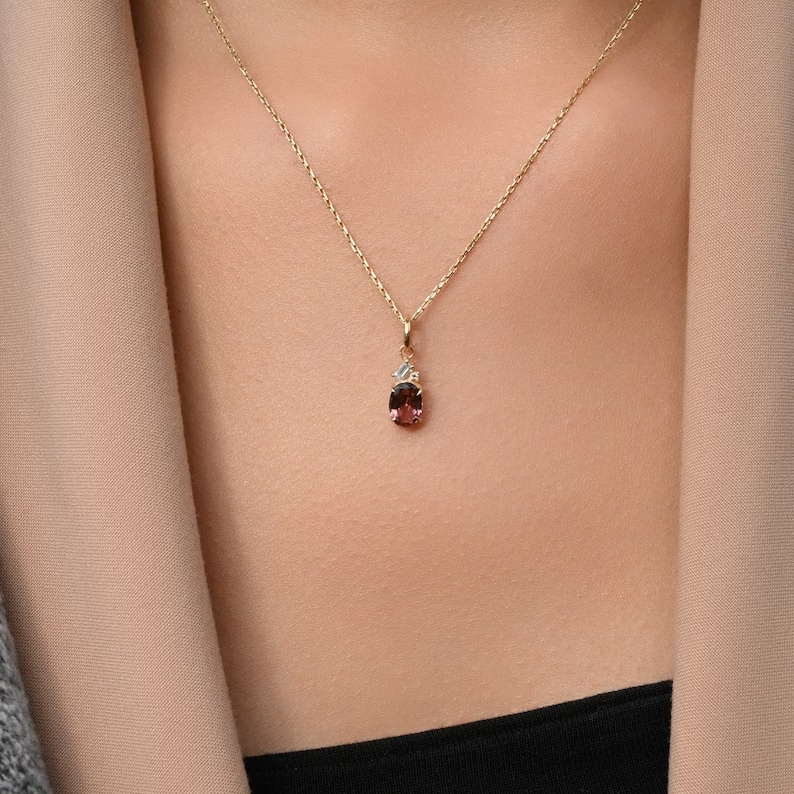
Often confused with rhodochrosite and rhodonite, rhodolite is a rare variety of the garnet family. Rhodolite is found in unique shades of pink, often with little to no visible impurities. The stone has high brilliance due to its high refractive index. When properly faceted, this brilliance is maximized. Rhodolite is always untreated, meaning that it contains its natural color.
The stone’s relative hardness (6.5 to 7.5 Mohs) makes it suitable for use in various types of jewelry. They are quite tough stones and require minimal care and cleaning. This beautiful gemstone pairs well with any metal color and makes for stunning jewelry.
10. Pink Zircon
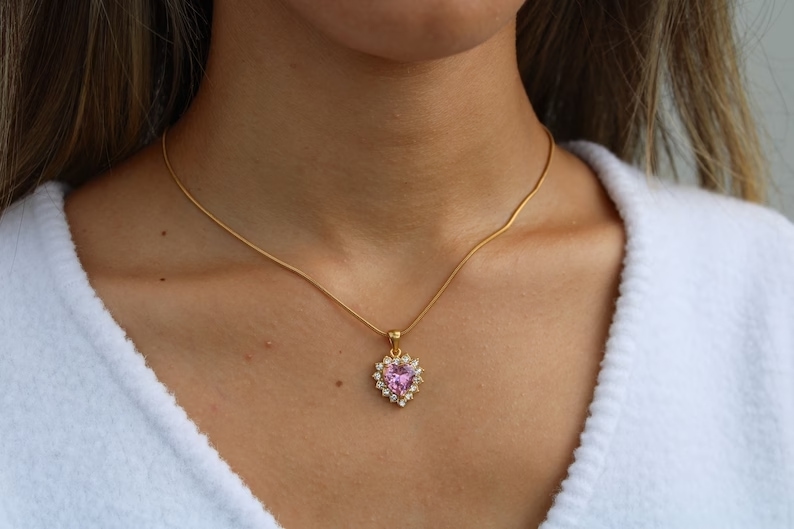
Zircon, not to be confused with the cheap diamond simulant cubic zirconia, is a natural gemstone that is often used as a diamond substitute. While blue is the most popular zircon color, pink is among the most beautiful.
Most pink zircons come from Sri Lanka, Burma, Cambodia, and the USA. Zircon is the only other natural gemstone with a brilliance comparable to diamonds. This can be seen in pink varieties as well.
Naturally, pink zircon is almost always faceted or cut into a brilliant shape to bring out the brilliance of the stone. Most pink zircon is eye-clean with no visible inclusions. Pink zircon has a vitreous luster and very high transparency.
Pink zircon ranks at 6 to 7.5 on the Mohs scale and is only fairly durable. It is also very brittle and not resistant to chipping and breaking. Generally, pink zircon is an affordable gemstone. It is a beautiful addition to any jewelry collection and makes for eye-catching pieces of jewelry.
11. Pink Chalcedony
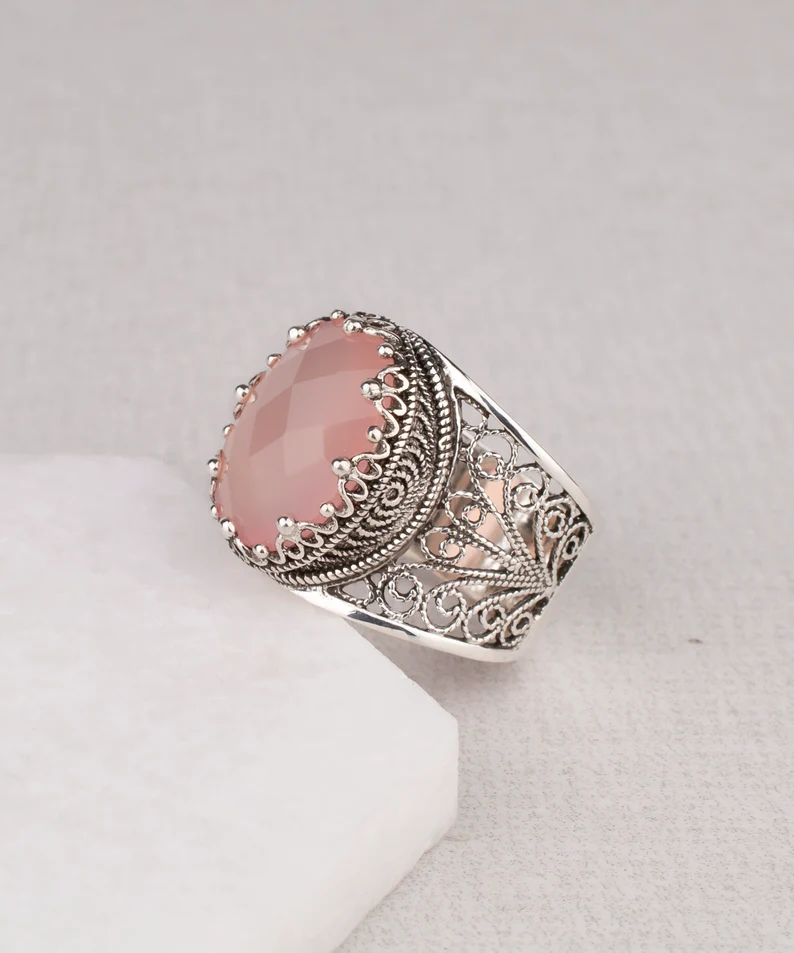
Pink chalcedony is an abundant gemstone and is found in many regions around the world. It comes in beautiful shades of pink, from faint, nearly colorless hues to slightly darker, pastel pinks. Pink chalcedony is soft and smooth to the touch, contains few visible inclusions, and has a vitreous to waxy luster.
Pink chalcedony consists of a microcrystalline structure and does not have crystal formations within it. Most stones are opaque to translucent. It is often cut into cabochons and polished smooth to heighten its attractive luster, but is also ideal for carvings.
Pink chalcedony contains no cleavage and has a Mohs ranking of 6.5 to 7. It is very durable and tough and is a common gemstone used in jewelry.
12. Rhodonite
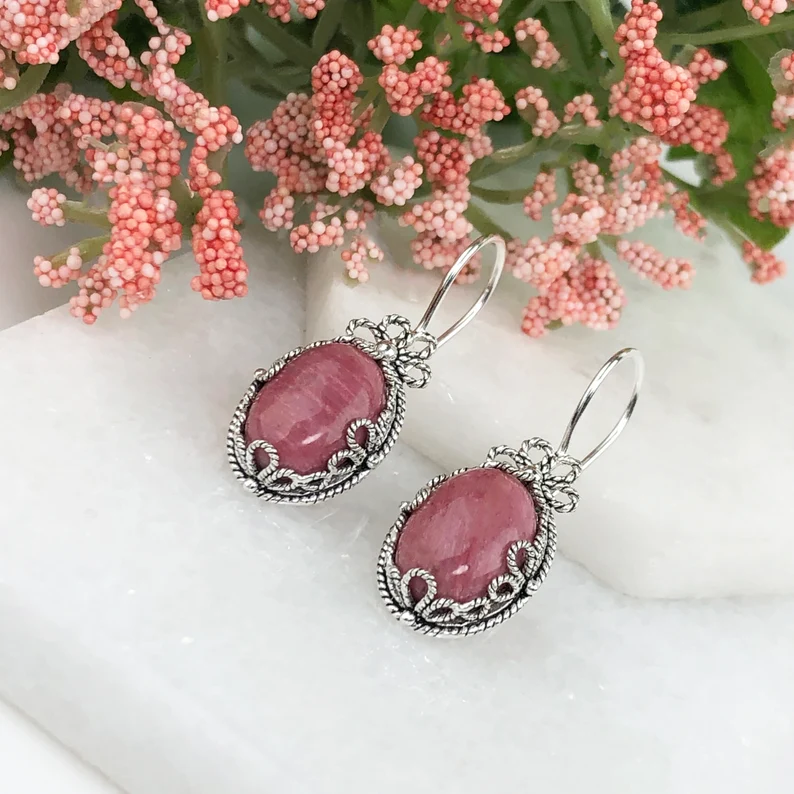
This little-known gemstone has a unique and distinct color making it easily recognizable. In fact, it is named for its hue, as rhodon is the Greek word for ‘rose-colored’. Rhodonite is commonly found in shades of light rosy pink to dark red and comes from various regions around the world. However, it is not a common mineral and is not a mainstream gemstone for use in jewelry.
Rhodonite can contain beautiful black dendritic inclusions which form intriguing patterns on the stone, somewhat similar to turquoise. Most rhodonite is opaque, while transparent rhodonite is very rare, highly sought after, and very valuable.
The stone only ranks 5.5 to 6.5 on the Mohs scale and has distinct cleavage. As a result, it is not very durable. However, it is a beautiful gemstone to add to any collection and is a popular gemstone collector’s choice.
13. Rose Quartz
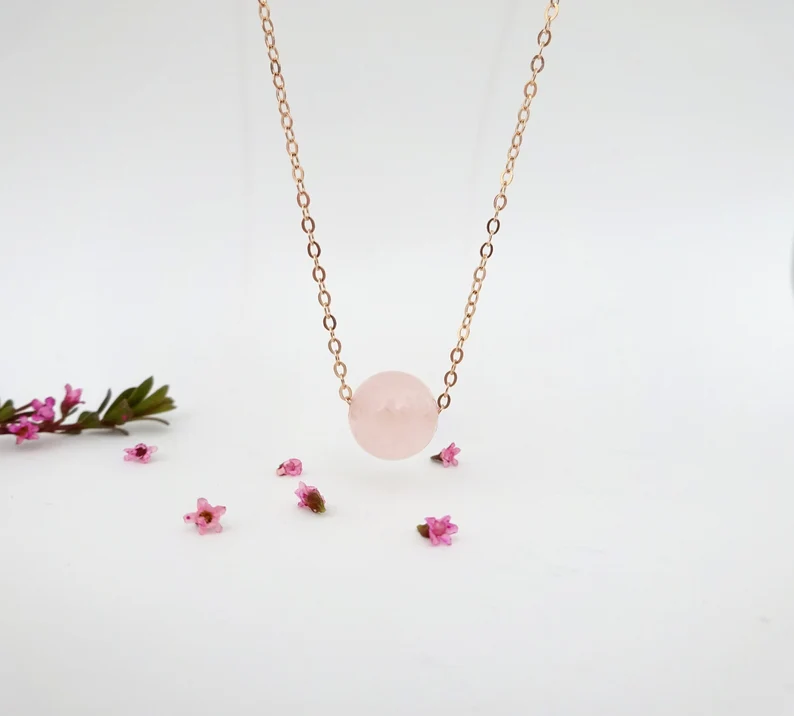
A popular stone used in crystal healing and Feng Shui, rose quartz comes in beautiful, muted shades of pink, ranging from very faint pink to medium-dark rose. Rose quartz is found abundantly around the world and is a very affordable gemstone.
Most quartz comes in transparent to translucent varieties, with a vitreous luster and a Mohs hardness of 7. It makes an excellent gemstone as it is very durable and when polished, is brilliant and lustrous.
Most rose quartz is cut en cabochon and polished smooth. These are mainly used to make bead bracelets and necklaces. However, the stone can also be used to create interesting and unique pieces of jewelry.
As it is found in large sizes and is very affordable, rose quartz is ideal for large jewelry items, such as statement necklaces and earrings, and cocktail rings.
14. Thulite
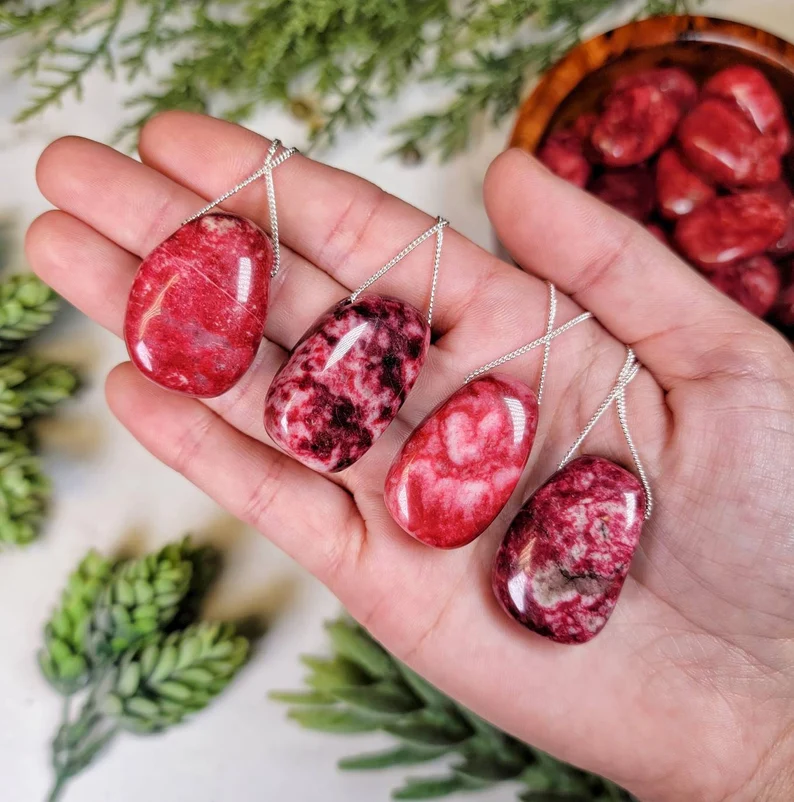
Thulite is the pink variety of the mineral family zoisite. It was initially found in Norway and was named after a mythical city of the region, Thule. While most thulite comes from Norway, deposits have also been found in the USA.
Thulite is similar in appearance to rhodonite, without the dendritic veins that rhodonite often contains. It has a unique pink hue that is eye-catching and beautiful in the use of jewelry. Most thulite is opaque, although translucent varieties are also sometimes found.
It has a hardness rating of 6 to 6.5 and slight cleavage and is not generally not considered suitable for rings or bracelets. Most thulite is cut into polished beads or cabochons. It can also be used to create carved images and ornamental items. It is not considered valuable, and is seen as a minor gemstone.
15. Lepidolite
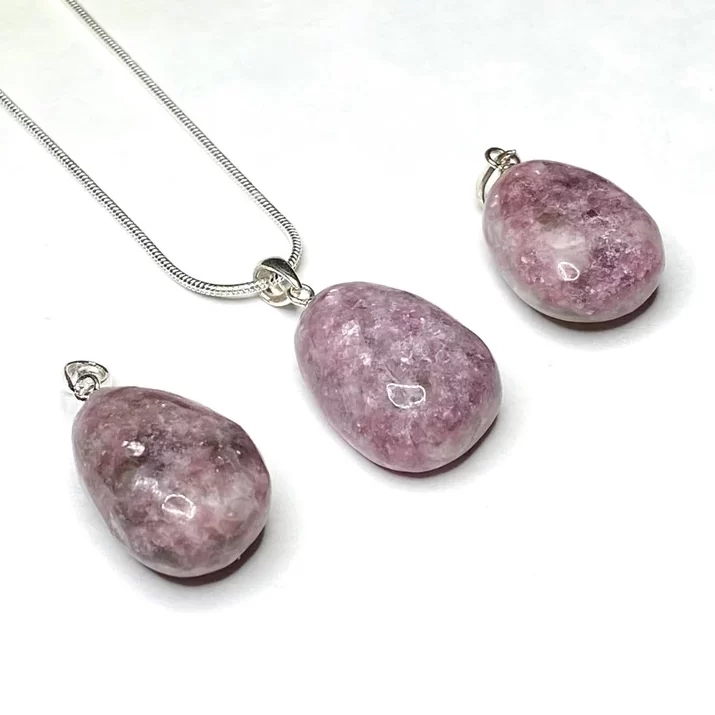
Lepidolite comes in gorgeous shades of pink and lilac and makes for unique, eye-catching jewelry. Most lepidolite comes from Brazil, Afghanistan, and Madagascar. It is a type of lithium and aluminum-rich mica, and so is technically not considered a stone.
Lepidolite has a vitreous to pearly luster and is commonly translucent to opaque in appearance. Sometimes, lepidolite stones can flake off, due to the lithium content.
Lepidolite is a tough stone but it is not very hard, only ranking at 2.5 to 3 on the Mohs scale. As such, lepidolite is not very durable and can easily get scratched, chipped, or broken with exposure. Lepidolite jewelry requires proper care and protection to keep the gemstone lasting through the years.
16. Pink Garnet
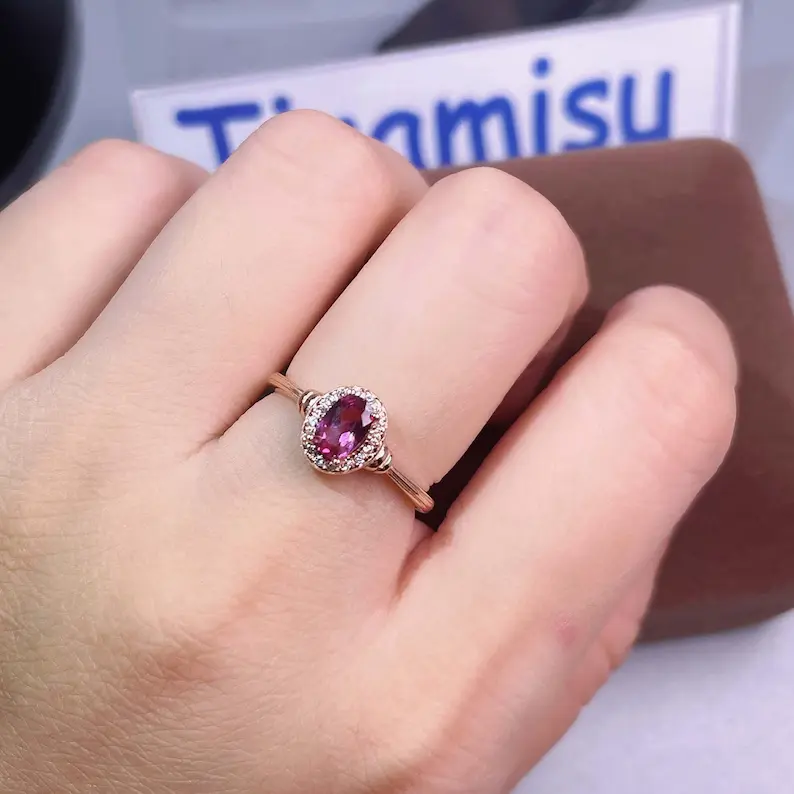
Pink garnet is a type of garnet mineral that exhibits a pink or reddish-pink color. It is a silicate mineral that is commonly found in metamorphic rocks, such as schist and gneiss. Pink garnet is known for its beauty and durability, which makes it a popular gemstone for jewelry. It has a hardness rating of 6.5-7.5 on the Mohs scale, which means it is relatively resistant to scratches and wear.
This stone is formed deep within the Earth’s crust and is the result of a complex geological process that involves high temperatures and pressures. It is believed to have various metaphysical properties, such as promoting love, passion, and emotional healing.
Some people use pink garnet in meditation or energy healing practices to help balance the heart chakra and promote feelings of compassion and empathy.
17. Pink Opal
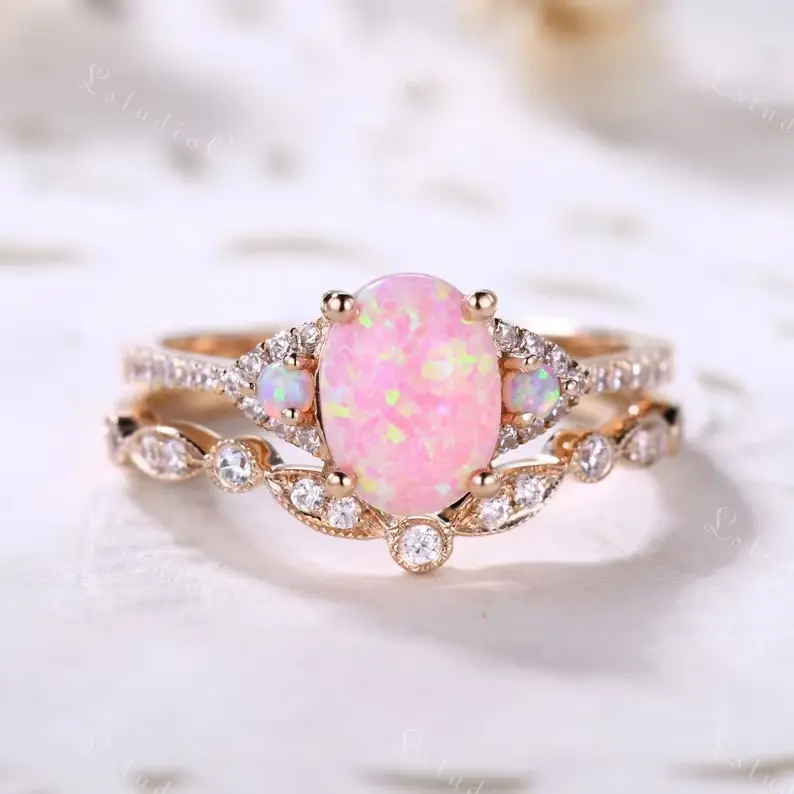
Pink opal is a popular gemstone that is frequently used in jewelry making. It is known for its unique and eye-catching appearance, which makes it a popular choice for both casual and formal jewelry designs.
Pink opal is a relatively soft gemstone, with a hardness rating of 5.5-6.5 on the Mohs scale. This means that it is not as durable as some other gemstones, such as diamonds or sapphires, and may be more susceptible to scratching or damage. As a result, it is important to handle pink opal jewelry with care and avoid exposing it to harsh chemicals or extreme temperatures.
Despite its softness, pink opal remains a popular choice for jewelry designers because of its unique color and appearance. It is often used in necklaces, bracelets, earrings, and rings, and is often paired with other gemstones or precious metals to create striking and sophisticated designs.
18. Pink Fluorite
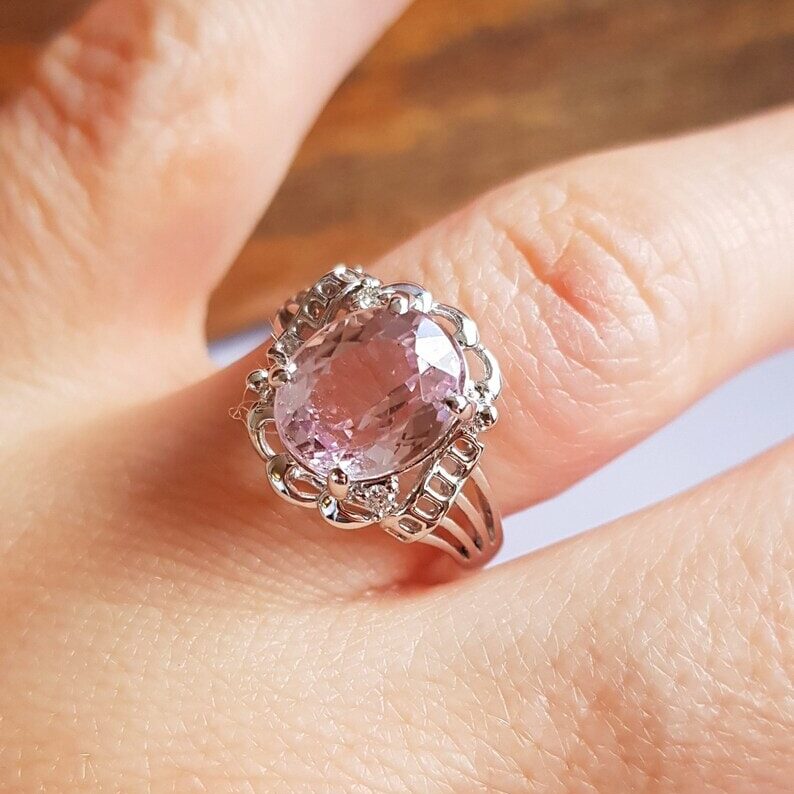
Pink fluorite is a beautiful gemstone that is prized for its unique pink coloration and stunning crystalline structure. It is a member of the fluorite family, which is known for its bright, translucent colors and eye-catching patterns. Pink fluorite is a soft gemstone, with a hardness rating of 4 on the Mohs scale, which means it requires some extra care when it comes to jewelry use.
However, pink fluorite is a popular choice for jewelry designers who appreciate its delicate color and stunning appearance. It is often used in necklaces, bracelets, and earrings, and can be paired with other gemstones or precious metals to create unique and beautiful pieces.
When using pink fluorite in jewelry, it is important to take care not to expose the gemstone to harsh chemicals or high temperatures, which can cause it to become damaged or discolored.
19. Pink Amethyst
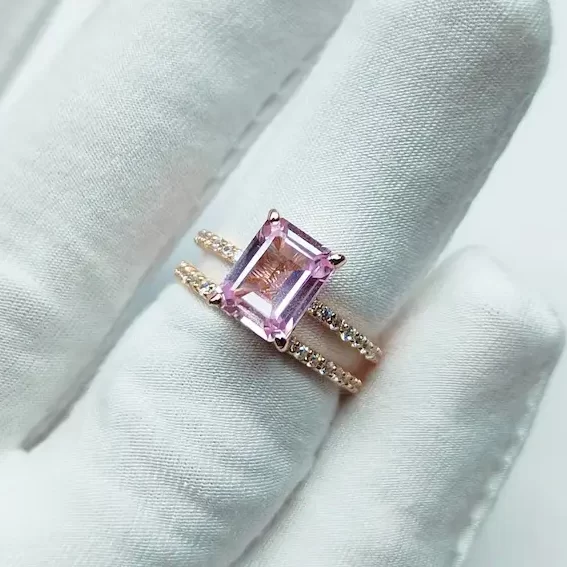
Pink amethyst is a member of the quartz family and is formed deep within the Earth’s crust. It is believed to have various metaphysical properties, such as promoting calmness, inner peace, and emotional healing.
In jewelry making, pink amethyst is a popular choice for its soft and feminine appearance. It is often used in necklaces, bracelets, earrings, and rings, and can be paired with other gemstones or precious metals to create striking and sophisticated designs. Pink amethyst is typically cut into faceted or cabochon shapes to showcase its unique color and texture.
Like all quartz gemstones, pink amethyst is relatively hard, with a hardness rating of 7 on the Mohs scale. This makes it durable enough for everyday wear, but it is still important to take care not to expose it to harsh chemicals or extreme temperatures that could damage the gemstone.
20. Pink Moonstone
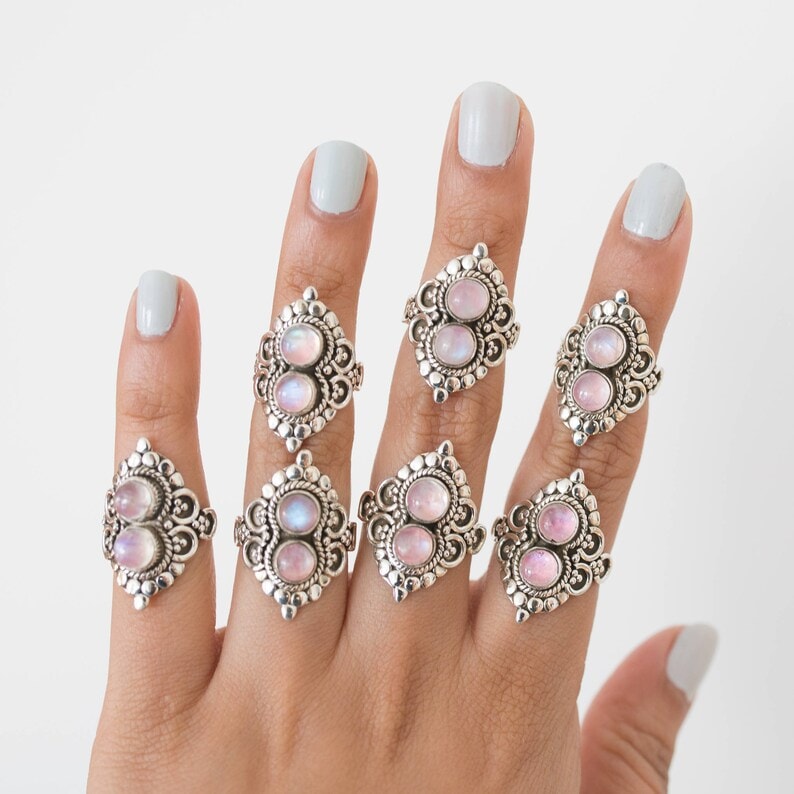
Pink moonstone is a type of feldspar mineral that exhibits a beautiful pink or peach coloration with a distinctive iridescent sheen. It is a rare gemstone that is treasured for its unique beauty and metaphysical properties.
Pink moonstone is often used in jewelry making and is particularly popular in bohemian and vintage-inspired designs. It is relatively soft, with a hardness rating of 6-6.5 on the Mohs scale, which means it should be handled with care to avoid scratches or damage.
In terms of metaphysical properties, pink moonstone is believed to have various healing and spiritual benefits. It is thought to promote emotional healing and balance, as well as enhance intuition and creativity. Pink moonstone is often used in meditation or energy healing practices to help calm the mind and promote inner peace.
21. Pink Apatite
Pink apatite is a variety of apatite, a mineral that is typically found in a wide range of colors, including blue, green, yellow, and pink. As the name suggests, pink apatite has a pink coloration that can range from pale pink to a more intense magenta hue.
Pink apatite is a relatively soft mineral, with a hardness rating of 5 on the Mohs scale. It is often used in jewelry making as a result of its unique color and texture. However, because of its softness, it may not be as durable as some other gemstones and should be handled with care to avoid scratches or damage.
22. Pink Jasper
Pink jasper is known for its unique color patterns and markings. It’s a relatively hard mineral, with a hardness rating of 6.5-7 on the Mohs scale, which makes it a popular choice for jewelry making. Pink jasper is often used in necklaces, bracelets, and earrings, and can be paired with other gemstones or precious metals to create unique and beautiful designs.
This stone is believed to promote feelings of peace and tranquility, as well as enhance emotional balance and stability. It is thought to help release negative emotions and promote feelings of inner peace and well-being.
Pink jasper is a unique and beautiful gemstone that can add a touch of elegance and sophistication to any jewelry collection. Its metaphysical properties make it a popular choice for those seeking a gemstone with both aesthetic and spiritual qualities.
23. Pink Aventurine
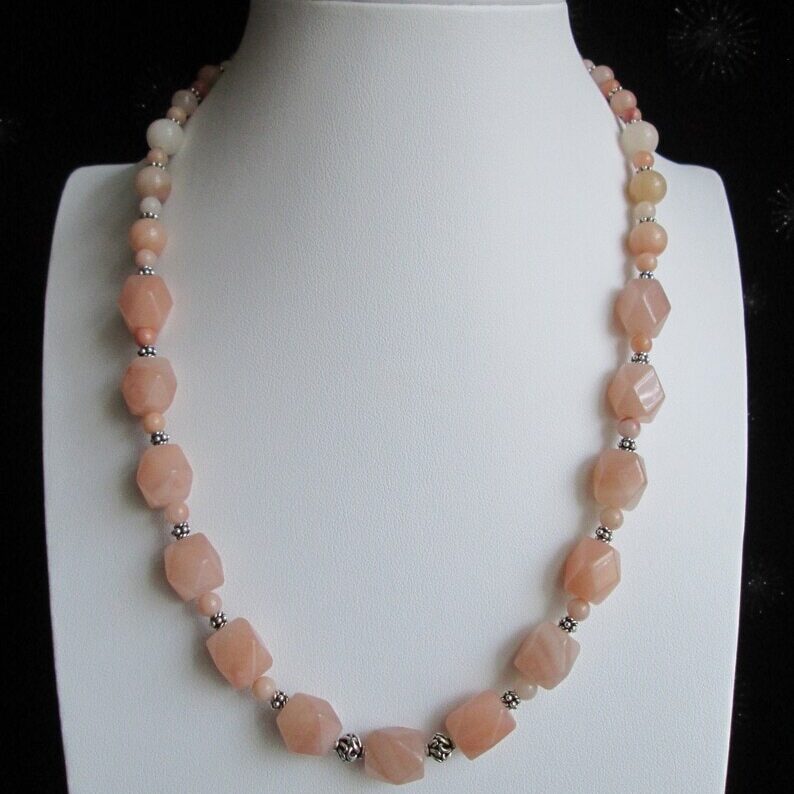
Unlike other types of aventurine, which are typically green, pink aventurine exhibits a distinctive pink coloration that ranges from a pale, almost translucent pink to a darker, more intense pink hue. Like other types of quartz, pink aventurine is a relatively hard mineral, with a hardness rating of 7 on the Mohs scale.
In terms of metaphysical properties, pink aventurine is believed to promote feelings of love and compassion, as well as enhancing creativity and imagination. It is also thought to have a calming effect on the mind and body, and can be used to promote emotional healing and balance.
24. Pink Calcite
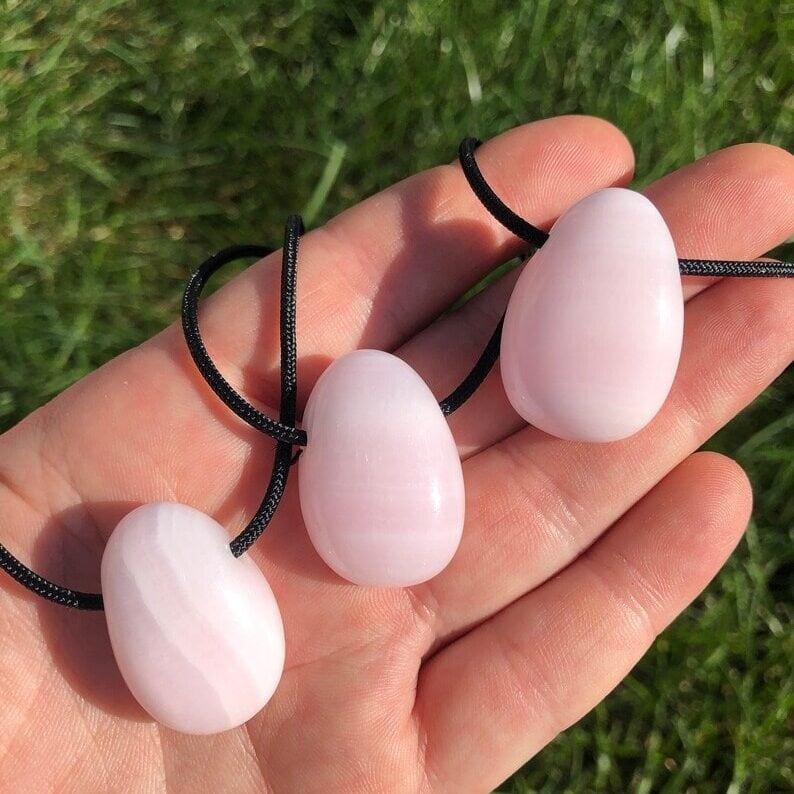
Pink calcite is a mineral that is a form of calcium carbonate with the chemical formula CaCO3. It is typically pink in color, although it can also be found in shades of white, gray, yellow, and orange. Pink calcite is known for its calming and soothing properties and is often used in crystal healing and meditation practices.
In terms of hardness, pink calcite has a rating of 3 on the Mohs scale of mineral hardness. This means that it is a relatively soft mineral and can be easily scratched with a knife or other sharp object.
It is also less dense than many other minerals and has a specific gravity of around 2.7. Despite its softness, pink calcite is still a popular choice for decorative objects and is often used in the production of sculptures, jewelry, and other ornamental items.
25. Pink Halite
Pink halite gets its pink color from the presence of impurities, such as iron oxide, manganese, and bacteria, that can be found in the salt deposits where it is formed. It is typically found in salt mines and caves and is often used as a decorative mineral specimen.
This stone has a rating of 2.5 on the Mohs scale of mineral hardness which means that it is a relatively soft mineral and can be easily scratched with a fingernail or other soft object. Despite its softness, pink halite is still a popular choice for decorative purposes and is often used in the production of lamps, candleholders, and other decorative objects.
However, because it is a salt mineral, it is also susceptible to damage from exposure to water and moisture, and should be kept in a dry environment to prevent erosion and dissolution.
26. Pink Feldspar
Pink feldspar is a type of mineral that is a variety of the mineral feldspar, which is one of the most common minerals found in the Earth’s crust. Pink feldspar gets its pink color from the presence of microscopic inclusions of hematite or other minerals. It is a popular mineral in the gemstone industry and is often used in jewelry making.
This stone has a rating of 6 to 6.5 on the Mohs scale of mineral hardness, which means it’s relatively hard and durable. This means that it can withstand moderate wear and tear and is less likely to scratch or chip than softer minerals.
Pink feldspar is also valued for its optical properties, such as its strong color and its ability to display a phenomenon known as adularescence, which is a milky, bluish luster that appears to move across the surface of the mineral when it is viewed from different angles.
27. Pink Sunstone
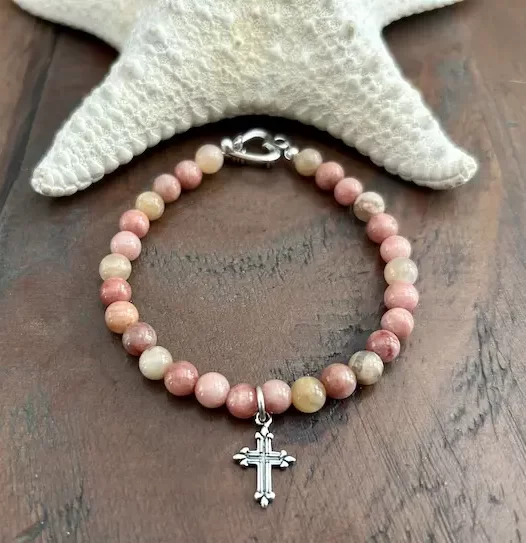
This feldspar mineral has a pink to peach color and is characterized by its shimmering, iridescent effect, which is caused by the presence of tiny reflective inclusions within the stone. The reflective inclusions are typically made up of copper or copper-bearing minerals. It’s found in various locations around the world, including the United States, Canada, Norway, and India.
In terms of hardness, pink sunstone has a rating of 6 to 6.5 on the Mohs scale of mineral hardness, which makes it relatively durable and resistant to scratching and chipping. This hardness level is similar to that of other types of feldspar minerals, such as pink feldspar and moonstone.
Due to its unique color and shimmering effect, pink sunstone is popular in the gemstone industry and is often used in jewelry making, particularly for rings, pendants, and earrings.
28. Pink Seraphinite
Pink seraphinite is a rare variety of seraphinite, a type of mineral that is a form of the mineral clinochlore. It is named for its characteristic pink color, which is caused by the presence of iron within the crystal lattice. Pink seraphinite is typically found in only a few locations around the world, including Russia and Italy.
Seraphinite has a rating of 2 to 2.5 on the Mohs scale of mineral hardness. This means that it is easily scratched and can be brittle, and care should be taken when handling it.
Despite its softness, seraphinite is still a popular choice for decorative purposes and is often used in the production of carvings, cabochons, and other ornamental objects. The stone is particularly sought after for its unique pink color, which is relatively rare compared to other forms of seraphinite.
29. Pink Mother of Pearl
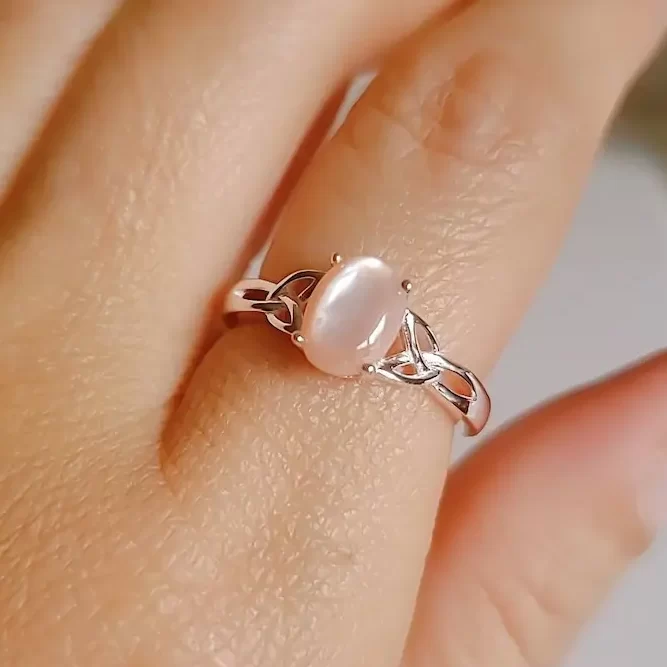
Pink mother of pearl is a type of iridescent material that is produced by certain species of mollusks, such as abalone and pearl oysters. It is characterized by its pinkish coloration and its distinctive iridescence, which is caused by the interference of light as it passes through the layers of the material. This stone is often used in jewelry making, as well as in decorative objects such as picture frames, buttons, and other accessories.
Mother of pearl has a rating of 3.5 on the Mohs scale of mineral hardness, which makes it a relatively soft material. However, its iridescent surface is highly valued for its beauty and is often used in the production of high-end jewelry and luxury goods. Because of its softness, pink mother of pearl is best suited for use in jewelry items that will not be subjected to heavy wear or impact.
30. Pink Cat’s Eye
Pink cat’s eye is a type of gemstone that exhibits unique chatoyancy, or “cat’s eye” effect, which is caused by the reflection of light off of parallel inclusions within the stone. The color of pink cat’s eye can range from pale pink to deep magenta, and it is typically translucent to opaque.
Pink cat’s eye is typically cut into cabochons to highlight its chatoyancy, and it is popular in the production of jewelry such as rings, pendants, and bracelets.
Pink cat’s eye has a rating of 6.5 to 7 on the Mohs scale of mineral hardness, which makes it a relatively durable gemstone that is resistant to scratching and chipping. However, care should still be taken when handling and storing pink cat’s eye jewelry to prevent damage. It is important to note that, like all gemstones, pink cat’s eye should be cleaned and cared for properly to ensure its longevity and beauty.
Which Pink Gemstone Should I Choose?
For Engagement Rings
There are several pink gemstones that are ideal for engagement rings, depending on the wearer’s personal preference, budget, and lifestyle. Here are some popular options and the reasons why they are a good choice:
- Pink Sapphire – Durable with a hardness of 9 on the Mohs scale, less expensive than pink diamonds, high sparkle and brilliance.
- Pink Diamond – Exceptionally rare and beautiful, with a hardness of 10 on the Mohs scale, but very expensive.
- Morganite – Lovely pastel pink gemstone, affordable compared to other options, with a hardness of 7.5 to 8 on the Mohs scale.
- Pink Tourmaline – Beautiful gemstone in shades of pale pink to bright fuchsia, with a hardness of 7 to 7.5 on the Mohs scale, relatively affordable.
- Rose Quartz – Delicate pink gemstone with a romantic, feminine look, with a hardness of 7 on the Mohs scale, best suited for occasional wear.
For Costume and Fashion Jewelry
Pink gemstones are popular in costume and fashion jewelry for their eye-catching color and affordability. These gemstones are often used as accents in statement pieces or as the main stone in more affordable designs. Here are some pink gemstones that are ideal for costume and fashion jewelry:
- Pink Opal – This soft pink gemstone has an opaque appearance and is best suited for occasional wear or fashion jewelry. It is affordable and can be found in a variety of shades and sizes.
- Rhodonite – This beautiful gemstone features a mix of pink and black colors and is popular in fashion jewelry. It has a hardness of 5.5 to 6.5 on the Mohs scale, making it durable enough for everyday wear.
- Pink Chalcedony – This translucent pink gemstone has a soft, milky appearance and is often used as an accent in costume jewelry designs. It is affordable and can be found in a variety of shapes and sizes.
- Pink Tourmaline – This gemstone comes in a range of shades, from pale pink to bright fuchsia, and is popular in fashion jewelry for its vibrant color. It has a hardness of 7 to 7.5 on the Mohs scale, making it durable enough for daily wear.
- Pink Jade – This gemstone is a soft, delicate pink and is popular in fashion jewelry for its affordable price and unique look. It is not as durable as some other options, but is still a good choice for occasional wear.
Soft Pink Gemstones
A soft pink gemstone typically refers to a gemstone with a relatively low level of hardness, which can make it more prone to scratches and damage. Soft pink gemstones are often used for decorative or ornamental purposes rather than for everyday wear. They can be used in a variety of jewelry designs, including fashion and statement pieces.
Some examples of soft pink gemstones include:
- Pink Opal – This gemstone is a popular choice for decorative or ornamental jewelry due to its soft, milky appearance and delicate pink color.
- Rose Quartz – This gemstone is a popular choice for decorative jewelry due to its delicate pink color and unique cloudy appearance.
- Pink Chalcedony – This translucent pink gemstone is a popular choice for decorative or ornamental jewelry, often used as an accent stone in designs.
Soft pink gemstones are not typically used in engagement rings or other types of jewelry that are subject to frequent wear and tear. Instead, they are often used in fashion or statement pieces that are worn for special occasions or events.
Found a Pink Gemstone You Love?
Before adding a pink gemstone to your jewelry collection, consider your reason for buying. This will help you to choose a stone that will suit your requirements. For example, if you wish to buy a pink gemstone ring, consider durability. This is a priority especially for an engagement ring, as you will be wearing it every day.
Also, consider the cost of the gemstone. Some gemstones are very rare and come without any treatments or enhancements, and yet are very affordable. For more expensive gemstones such as diamonds and sapphires, you may wish to consider a synthetic alternative. Remember that synthetic gemstones are not fakes. They are merely grown in labs as opposed to forming in nature, and in every way are identical to their natural counterparts.
Some gemstones are more valued and accepted by consumers than others. This is especially true of diamonds, sapphires, morganites, topazes, and tourmalines. However, other lesser-known gemstones can make for stunning, unique types of jewelry that will surely draw eyes to you and bring you lots of compliments!
FAQs about Pink Gemstones Used in Jewelry
What are some popular pink gemstones used in jewelry?
Pink sapphire, pink tourmaline, morganite, pink diamond, and rose quartz are some of the most popular pink gemstones used in jewelry.
Are pink gemstones suitable for engagement rings?
Yes, pink gemstones are a popular choice for engagement rings due to their romantic and feminine appeal.
Do all pink gemstones have the same level of hardness?
No, the hardness of pink gemstones can vary widely, from very soft (such as pink opal) to very hard (such as pink sapphire).
Are pink diamonds more expensive than white diamonds?
Yes, pink diamonds are much rarer than white diamonds, making them more expensive.
Are synthetic pink gemstones less valuable than natural ones?
Generally, synthetic pink gemstones are less valuable than natural ones, although high-quality synthetic stones can still be quite valuable.
Can pink gemstones be used in men’s jewelry?
Yes, pink gemstones can be used in men’s jewelry, particularly as accent stones.
Do all pink gemstones have the same shade of pink?
No, pink gemstones can range from very pale pink to vibrant fuchsia, with many shades in between.
Are pink gemstones suitable for everyday wear?
It depends on the hardness of the gemstone. Some pink gemstones, such as pink sapphire, are suitable for everyday wear, while others, such as pink opal, may be more prone to damage.
Are there any cultural or spiritual meanings associated with pink gemstones?
In many cultures, pink gemstones are associated with love, compassion, and emotional healing.
Are there any famous pink gemstones?
Yes, some of the most famous pink gemstones include the Pink Star diamond, the Graff Pink diamond, and the Pink Promise diamond.
Wrapping Up
Pink gemstones are a popular choice for jewelry designs, adding a touch of feminine charm and elegance. From pale pink to vibrant fuchsia, pink gemstones come in a wide range of shades and are used in a variety of jewelry styles, including engagement rings, fashion, and costume jewelry.
Whether you prefer the durability of pink sapphire or the delicate beauty of rose quartz, there is a pink gemstone out there for every taste and style. With their timeless appeal and unique properties, pink gemstones are sure to remain a beloved choice in jewelry for years to come.


